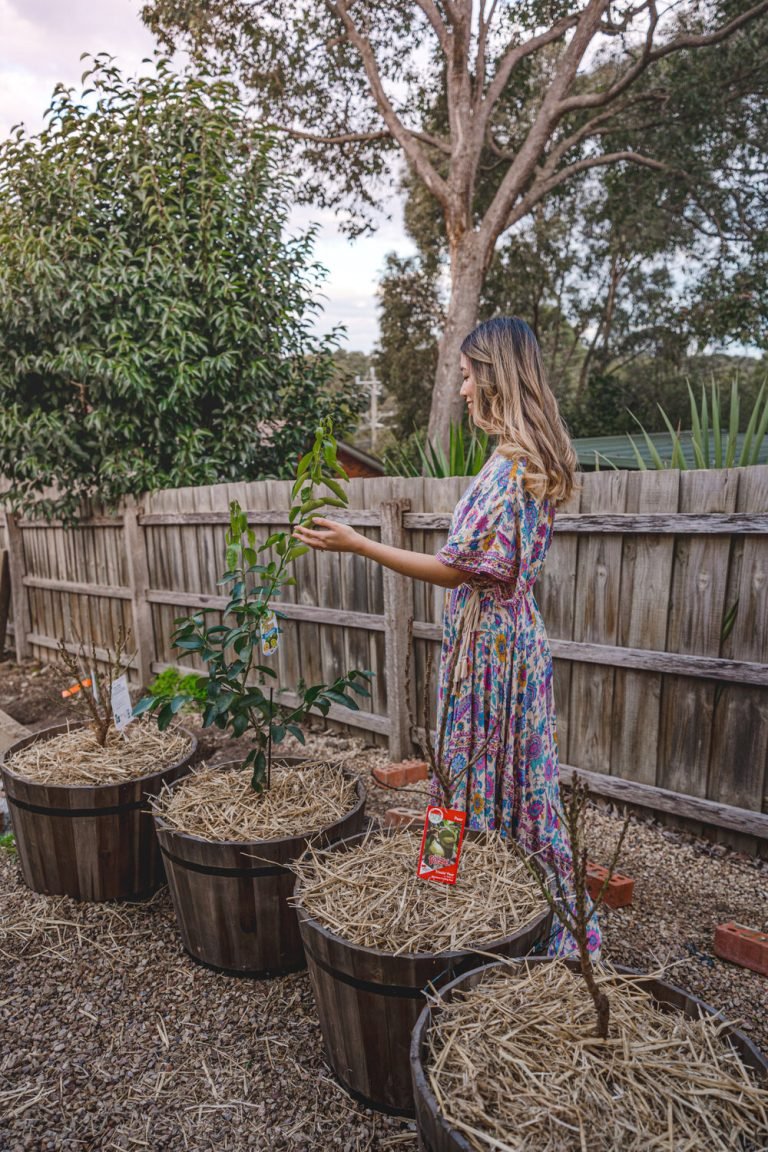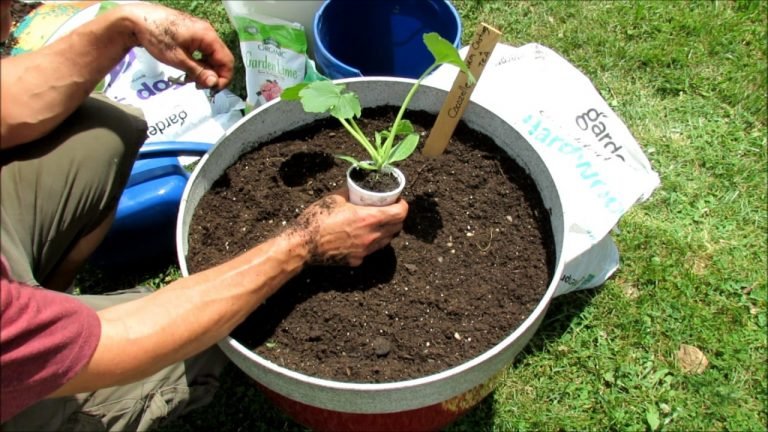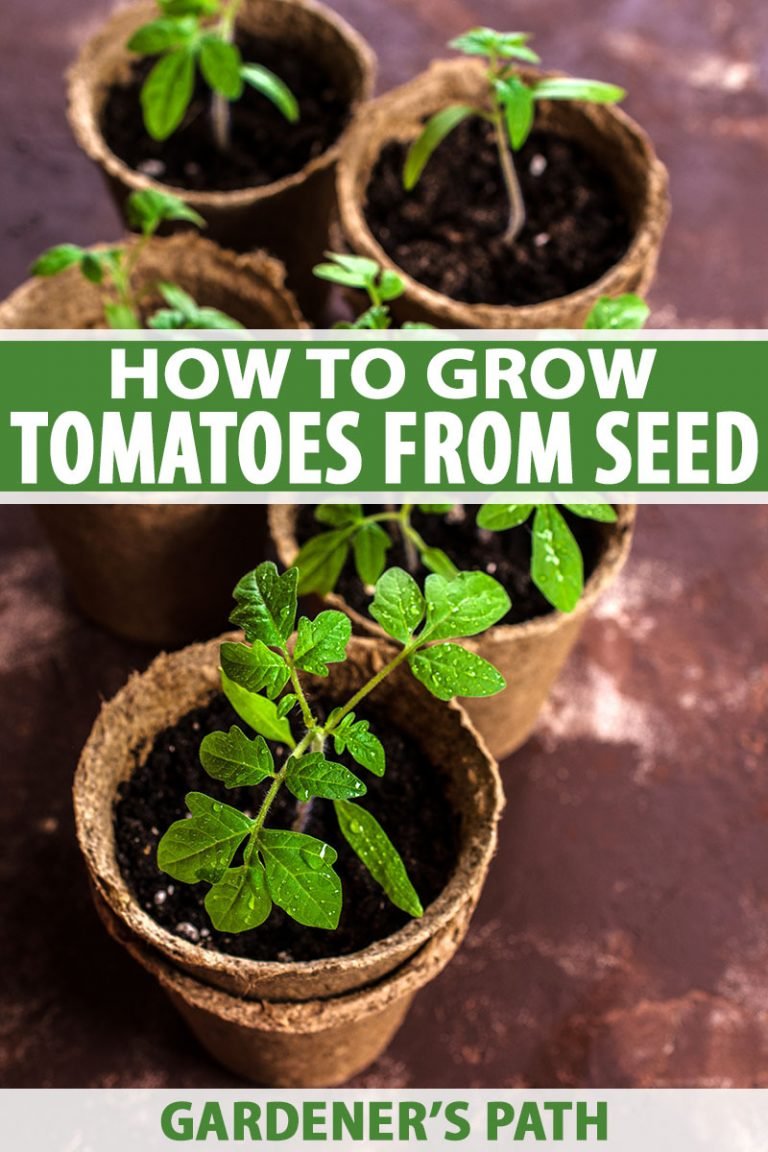how to grow calamansi in a pot – [Beginners Guide]
Are you looking for another exciting plant to grow in pots at home? Consider giving calamansi a try! This citrus fruit, also known as Philippine lime, is not only delicious but also packed with nutrients. Growing it in a pot is a great idea for those who have limited space or live in apartments or urban areas.
As someone who grew up in the Philippines, I have fond memories of picking calamansi from our backyard and using it to flavor dishes or make refreshing drinks. When I moved to a smaller apartment in the city, I was thrilled to discover that I could still grow calamansi in pots on my balcony.
In this guide, I will share my personal experience and tips on how to successfully grow calamansi in a pot, including selecting the right pot, soil, and location, as well as proper watering and fertilizing techniques. I’ll also provide some troubleshooting tips to help you overcome common problems that you may encounter along the way.
Growing calamansi in a pot is not only a practical solution for those with limited space, but it’s also a fun and rewarding activity. You can enjoy the benefits of fresh citrus fruit right at your doorstep, and add a new dimension of flavor to your dishes and drinks. So, let’s get started on this exciting adventure of growing calamansi in a pot!
Pot or container selection
When it comes to growing calamansi in pots, choosing the right pot is equally important for the success of your plants. The pot should be large enough to accommodate the root system of the plant and provide ample space for growth.
A pot with a capacity of at least 10-15 gallons is recommended for growing calamansi. The pot should also have a diameter of at least 18-20 inches and a depth of 12-15 inches. This will give your calamansi tree enough room to grow and develop a healthy root system.
When it comes to the construction of the pot, it’s best to choose a durable material such as plastic, fiberglass, or ceramic. Avoid using pots made of metal or wood, as they may rust or rot over time, affecting the health of your plant.
Ensure that the pot has drainage holes at the bottom to allow excess water to drain out. Calamansi trees prefer well-draining soil, and too much water can lead to root rot. Additionally, it’s best to elevate the pot on bricks or stands to allow proper drainage and airflow.
In summary, when selecting a pot for your calamansi tree, go for a large pot with a capacity of at least 10-15 gallons, a diameter of 18-20 inches, and a depth of 12-15 inches. Choose a pot made of durable materials such as plastic, ceramic, or fiberglass and ensure it has proper drainage holes. By selecting the right pot, you can give your calamansi tree the best chance for healthy growth and fruit production.
Make suitable soil mix
Growing calamansi in a pot also requires careful consideration of the soil mix used. Like with any plant, the soil composition is crucial to its growth and development. Here’s what you need to know about selecting the right soil mix for calamansi:
Type
Calamansi grows best in well-draining soil that is rich in organic matter. For a soil mix that is specifically formulated for citrus plants like calamansi, you can look for a potting mix that is labeled for citrus plants or acid-loving plants. These mixes are typically made from a blend of peat moss, perlite, vermiculite, and/or sand, which allows for proper aeration and drainage.
Mixture
Adding some amendments to your soil mix can also help to give your calamansi plants a boost. You can add compost to improve the soil’s structure, drainage, and nutrient content. You can also use organic fertilizers, such as fish emulsion or kelp meal, to provide additional nutrients for your plants. Adjusting the pH of the soil can also be beneficial. Calamansi prefers a slightly acidic soil pH of 6.0 to 6.5. Adding organic matter like compost can help with pH adjustment. If you need to lower the pH, you can use sulfur or aluminum sulfate, and if you need to raise the pH, you can use lime.
In summary, using a high-quality potting mix formulated for citrus plants and adding amendments like compost, organic fertilizers, and pH adjusters can help ensure your calamansi plants have the right soil composition to grow optimally.
How to plant the calamansi?
Planting calamansi in a pot at home is a straightforward process that requires the following steps:
Step 1: Choose the right pot
Select a pot that is large enough to accommodate the root system of your calamansi tree. A pot with a diameter of at least 14 inches and a depth of at least 18 inches is suitable for most calamansi varieties. Ensure that the pot has drainage holes to prevent waterlogging.
Step 2: Prepare the soil mix
Use a high-quality potting mix that is well-draining and rich in nutrients. You can mix potting soil with compost and perlite or vermiculite to improve drainage and aeration. Alternatively, you can buy a pre-mixed potting soil that is specifically formulated for citrus trees.
Step 3: Plant the calamansi seedling
Remove the calamansi seedling from its container, being careful not to damage the roots. Place the seedling in the center of the pot and fill in around the root ball with soil, gently tamping it down to remove any air pockets. Ensure that the top of the root ball is level with the soil surface.
Step 4: Water and fertilize
Water the soil well after planting to help settle the soil around the roots. Calamansi trees require regular watering, but you should avoid overwatering as it can cause root rot. A good rule of thumb is to water the tree deeply once a week or more frequently if the soil is dry.
Fertilize the tree with a citrus-specific fertilizer every two to three months to ensure it receives the necessary nutrients to grow and produce fruit. Follow the instructions on the fertilizer package for the recommended amount and frequency.
Step 5: Provide appropriate light and temperature
Place the pot in an area that receives full sunlight for at least six hours a day. Calamansi trees thrive in warm temperatures between 60 and 85 degrees Fahrenheit. Ensure that the tree is protected from cold drafts and frost, as these can damage the leaves and fruit.
Step 6: Prune the tree
Prune the calamansi tree regularly to promote healthy growth and fruit production. Remove any dead or diseased branches and thin out the tree to improve airflow and sunlight penetration.
By following these steps, you can successfully grow a healthy and productive calamansi tree in a pot at home.
How to care for calamansi?
Planting calamansi in a pot at home is a straightforward process that requires the following steps:
Step 1: Choose the right pot
Select a pot that is large enough to accommodate the root system of your calamansi tree. A pot with a diameter of at least 14 inches and a depth of at least 18 inches is suitable for most calamansi varieties. Ensure that the pot has drainage holes to prevent waterlogging.
Step 2: Prepare the soil mix
Use a high-quality potting mix that is well-draining and rich in nutrients. You can mix potting soil with compost and perlite or vermiculite to improve drainage and aeration. Alternatively, you can buy a pre-mixed potting soil that is specifically formulated for citrus trees.
Step 3: Plant the calamansi seedling
Remove the calamansi seedling from its container, being careful not to damage the roots. Place the seedling in the center of the pot and fill in around the root ball with soil, gently tamping it down to remove any air pockets. Ensure that the top of the root ball is level with the soil surface.
Step 4: Water and fertilize
Water the soil well after planting to help settle the soil around the roots. Calamansi trees require regular watering, but you should avoid overwatering as it can cause root rot. A good rule of thumb is to water the tree deeply once a week or more frequently if the soil is dry.
Fertilize the tree with a citrus-specific fertilizer every two to three months to ensure it receives the necessary nutrients to grow and produce fruit. Follow the instructions on the fertilizer package for the recommended amount and frequency.
Step 5: Provide appropriate light and temperature
Place the pot in an area that receives full sunlight for at least six hours a day. Calamansi trees thrive in warm temperatures between 60 and 85 degrees Fahrenheit. Ensure that the tree is protected from cold drafts and frost, as these can damage the leaves and fruit.
Step 6: Prune the tree
Prune the calamansi tree regularly to promote healthy growth and fruit production. Remove any dead or diseased branches and thin out the tree to improve airflow and sunlight penetration.
By following these steps, you can successfully grow a healthy and productive calamansi tree in a pot at home.
Common problems
Other Issues
Other issues that may affect the growth of calamansi grown in pots include:
- Overcrowding: Overcrowding of plants in a pot can limit their growth and cause competition for nutrients and water.
- Root Bound: If the roots of the plant become root-bound, it can stunt the growth of the plant and reduce its ability to absorb water and nutrients. It’s important to repot the plant into a larger pot if necessary.
- Environmental Factors: Environmental factors such as extreme temperatures, strong winds, and low humidity can also affect the growth of calamansi grown in pots. Try to provide your plants with a stable and suitable environment, and protect them from extreme conditions.
By being aware of these common problems and taking steps to prevent and address them, you can help ensure a healthy and productive crop of calamansi grown in pots at home.
Harvesting & storing homegrown calamansi
Harvesting calamansi, also known as Philippine lime, is similar to harvesting cherry tomatoes in terms of timing and methods. Calamansi is ready to harvest when the fruits are yellow or orange in color, and they have reached their maximum size. However, some people prefer to wait until the fruit is fully ripe and turns slightly soft before harvesting.
To harvest calamansi, gently twist or pull the fruits from the tree. Be careful not to damage the stem or the tree itself. Calamansi has a thin skin that can be easily bruised or damaged, so handle them with care. Harvest only the amount that you need and leave the rest on the tree to ripen further.
After harvesting, you can store calamansi at room temperature or in the refrigerator. If you have a large harvest and want to keep them fresh for longer, you can also freeze them. To do this, wash the fruits thoroughly and dry them. Place them in a resealable plastic bag and store them in the freezer for up to six months.
In summary, harvest calamansi when the fruits are yellow or orange and have reached their maximum size. Handle them with care, and store them at room temperature or in the refrigerator. If you have a large harvest, you can freeze them for later use.
Growing calamansi in container – Conclusion
Congratulations on learning how to grow calamansi in a pot! You now have the knowledge and tools to start your own homegrown harvest. Growing calamansi in a pot is a great way to have fresh produce right at your fingertips, even if you have limited space. By choosing the right pot and soil, providing adequate care and attention, and addressing any problems that may arise, you can enjoy a bountiful harvest of delicious calamansi. So why not give it a try and see what you can grow? With a little bit of effort, you’ll be able to enjoy the fruits of your labor in no time. So get your pots ready, gather your soil and seeds, and let’s start growing!








